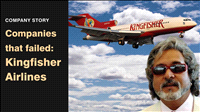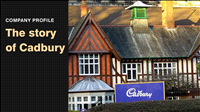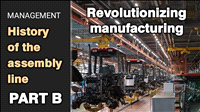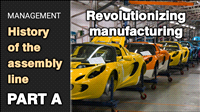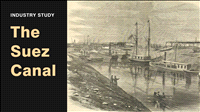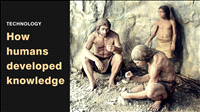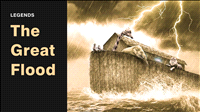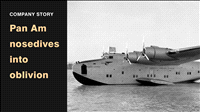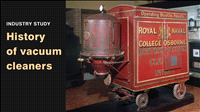Wang Laboratories | Businesses that are extinct | Business History
By Kiron Kasbekar | 14 Mar 2023
The video I’ve created for you today is the second of a series about products that failed in the marketplace.
Now failure has become part of the process of growth, where many things are tried, a few work, most others fail. Sometimes the ones that succeed also fail after a brief period of success.
There was a flurry of activity in the 1970s, 1980s and 1990s that eventually led to the computer hardware and software technologies we use today. The momentum that was building up in the 1970s came to a head in the 1980s, when companies that were nowhere on the scene earlier came to the fore. Companies like Microsoft and Apple.
But one company, which was, in a sense, a forerunner to these companies is rarely remembered today. And that is Wang Laboratories.
I mentioned this name to some of my colleagues, and they said they had never heard of Wang. Older ones because they were not so interested in computers except what they were using today. And younger ones because they were born in primary school when Wang Laboratories ceased to exist.
Yet once upon a time, Wang was a big name in the world of computing.
But before I start on all that, one request.
I hope you’ve seen our earlier videos and liked them. If so, please subscribe to this channel, if you have not done so already. Do also click on the ‘like’ button below. And share this link with your friends.
One other thing I’d like to mention here. And that is Informachine – a business news monitoring system that gets you content from your selection of thousands of business websites we have listed there. It saves you hours of grind and toil. And it’s free of cost! The link is given in the description below.
OK. Back to today’s video. I hope you watch it completely. Now let me get back to it.
In 1940, Wang, the son of a teacher, got a bachelor’s degree in science from Chiao-t’ung University in Shanghai. In 1945 he immigrated to the America, enrolled in Harvard University, and in 1948 earned a Ph.D. in applied physics and engineering from there.
His time at Harvard aroused his interest in electronics and computing. In 1948 Wang invented magnetic memory core, which served as the core of computer memories before microchips came on the scene.
In 1951 he founded Wang Laboratories, to make electronic products. No, the company didn’t begin making computers then. It started with other machines.
Wang thought he would turn his patent-winning idea the magnetic core memory into a highly profitable business. But one thing led to another and on 4 March 1956, he sold his core memory patent to IBM for just $500,000. That wasn’t a bad sum then, but Wang expected much more.
Wang was hopping mad with IBM because he believed IBM paid him a much lower price than he deserved by alluding to a rival patent application that had no chance of getting a patent.
Magnetic-core memory, also called just core memory, was the principal form of random-access computer memory for two decades between 1955 and 1975. But Wang was shut out of the gains from this business because of IBM’s cornering the technology.
Not to be deterred, Wang launched a series of desktop calculators and office computers, and became one of the most successful American high-technology companies in the 1970s and early 1980s. Wang served as president of the company until 1986 and passed on the baton to his eldest son, Frederick.
In 1964, Wang Laboratories produced an electronic special-purpose computer that could justify paper tape for use on automated Linotype machines. The computer was developed under contract to Compugraphic, an American maker of typesetting systems. Compugraphic retained the rights without paying Wang any royalty, and forced Wang out of the market.
But Wang had other plans. He launched a word processor that was major hit. Imagine a machine that did only word processing. Today we might laugh at the idea, and wonder why such a product could ever succeed. But, remember, this was well before the advent of personal computers, even the most primitive ones like the PC, which did not have a hard disk, and word mainly with DOS (MS Word).
The Wang machines allowed typists to correct, revise and rewrite a document or letter before printing it out. That was something other companies did not offer. The Wang word processors were a hit.
Office secretaries became very comfortable with Wang's green-tinted computer screens soon became a fixture in big companies around America. They were several notches above the typewriters that were used until then.
Wand also supplied the minicomputers that these word processors were connected to. These minicomputers were seen as another great invention. They had replaced the far more expensive and giant mainframes that companies used earlier.
The trouble with Wang was that technology was moving rapidly. Complacent with his success, the company did not see the significance of developments in the computing world. Wang was not the only company that was looking at things with blinkers on.
Digital Equipment Corporation, a major US-based computer company that was among the biggest computer firms in the world for a little over forty years until 1998, was another company that ignored the trends and lost out. Digital was acquired by PC maker Compaq, which managed it for four years until 2002, when it in turn was acquired by Hewlett-Packard.
Hewlett-Packard was a company that had read the signs and adjusted its strategy to deal with the new technology trends. This company was founded in 1939, well before either Wang or Digital, survives till today, although it has spun off its parts into different companies, some of which are profitable, and some are not.
While Wang had ridden on the trend that helped minicomputers trounce mainframe computers, he didn’t see another wave that would render minicomputers obsolete. The personal computers. By the time Wang Laboratories realized they should enter the PC market, and indeed launched their own PCs, it was too late.
Wang Laboratories was left with a line of mid-size minicomputers that used proprietary technology, and that was a problem in a market that was shifting to common industrywide standards.
But that was not all. The company piled up substantial debt to fund expansion. That debt burden added to the company’s woes.
Towards the end, Wang Laboratories had already shrunk from its employee strength of 31,500 to 13,000, and then to 5,000. And then, as the nursery rhyme says, there were none.
What do we learn from the Wang Laboratories’ collapse? The lesson is very similar to that we can get from a host of other failures. Companies that are ahead of the competition become complacent, do not take new technologies and new players seriously because they are too small to begin with – until they suddenly realize that the small firms have become big, and that they have better technology.
It’s often too late to change. What follows is bankruptcy. Shutdown.
That’s what happened to Wang. It shut down.
To sum up, An Wang started with an initial investment of $600 and built one of the biggest computer companies in the world. An Wang, who came up the hard way, held 40 patents to his name and was bestowed with 23 honorary degrees.
Wang died of cancer in 1990 at the age of 70. He had already handed over charge of the company to a non-family person, Richard W. Miller, who had taken charge of the company from Wang’s son Frederick, who had been unable to turn the company around.
Miller, a former General Electric Company executive, tried to turn the company around. He struck a deal with arch-enemy IBM to sell IBM machines with tailor-made software. But it was too late.
Customers as well as employees began to abandon Wang Laboratories. Customers because they realized they could get the same machines from IBM, and probably additional facilities. And when customers began to desert the company, employees decided to call it a day and to look for safer places in which to spend the rest of their careers.
In 1999, Wang Global (as Wang Laboratories was called then), was acquired by Dutch company Getronics. The Dutch company paid the shareholders of Wang Global, which had recently acquired Olsy, the service arm of Olivetti, for 3.7 billion guilders, that is, around 1.8 billion Euros.
That was the end of the Wang enterprise.






